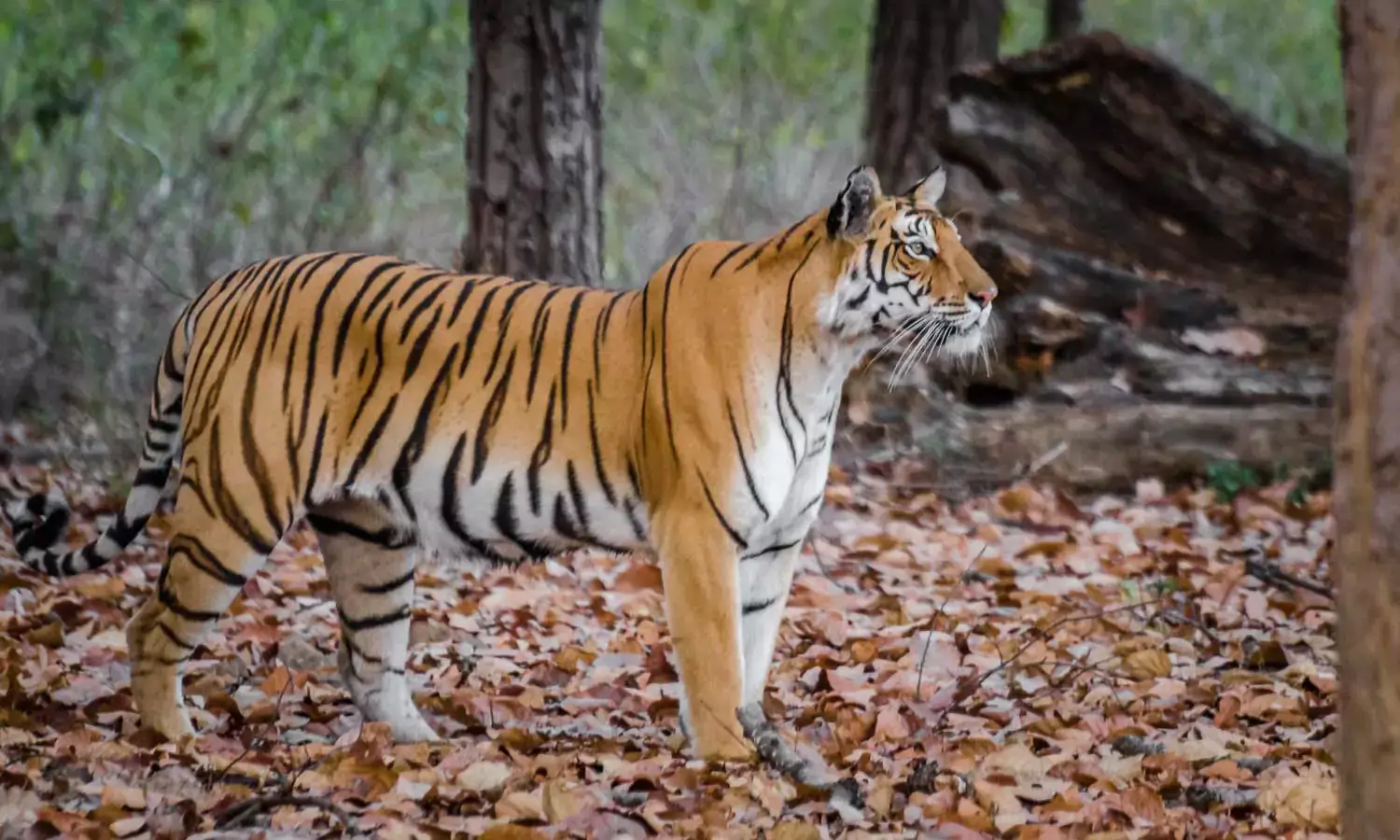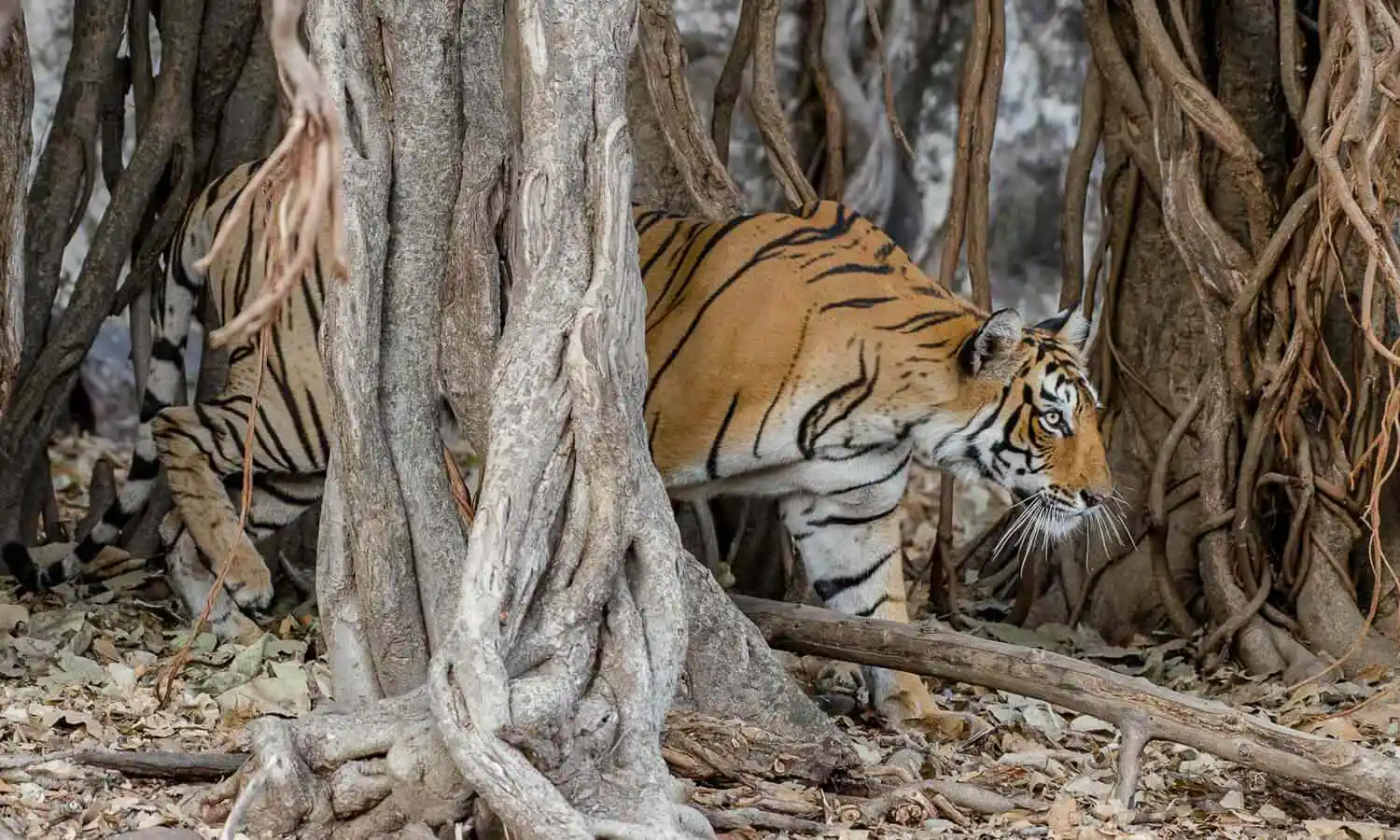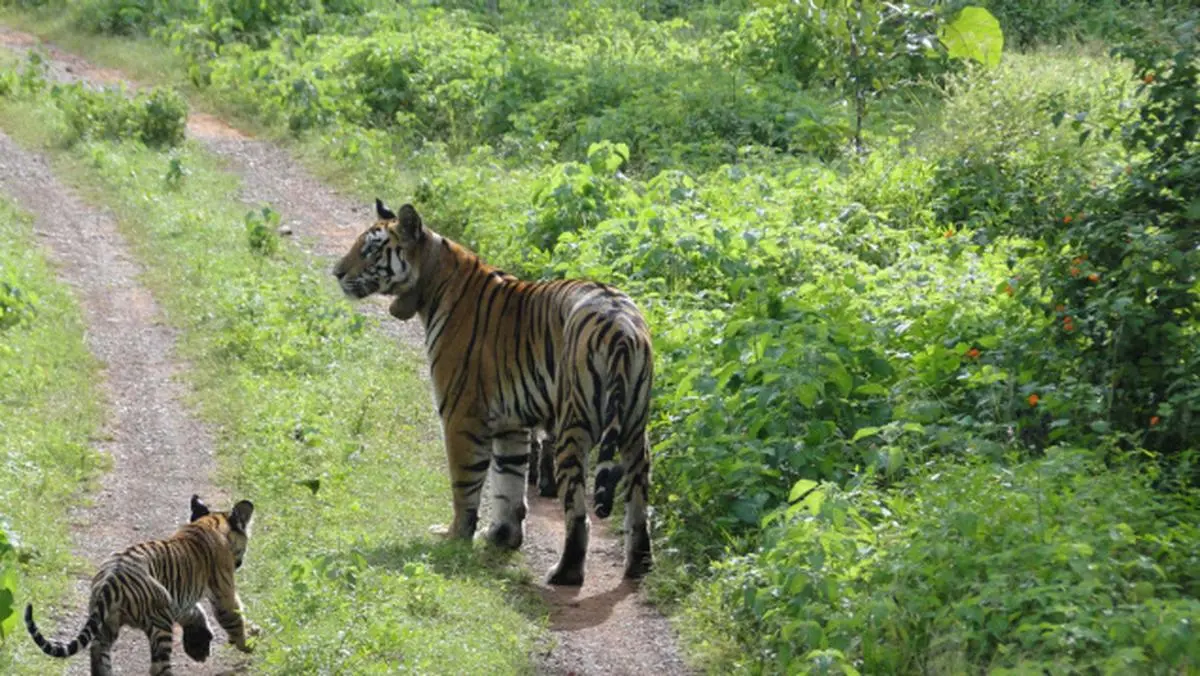Explore Panna in Comfort: Curated Luxury Jungle Escapes
Overview: Explore the wild beauty of Panna National Park while staying in some of Central India’s most enchanting
The tiger, one of nature’s most remarkable and powerful creatures, embodies strength, agility, and stealth. In the forests of India and Nepal, the tiger reigns supreme as the apex predator. However, its role extends far beyond being the ruler of the jungle. The tiger is a keystone species—an essential part of the ecosystem, whose presence ensures the balance of all life within its habitat. When the tiger thrives, so does the ecosystem, but without it, the intricate web of life begins to unravel.

A keystone species is one that plays a central role in maintaining the structure and diversity of an ecosystem. These species have a disproportionately large impact on their environment compared to their numbers. By regulating populations of other species and influencing the physical environment, keystone species create a balance that supports the entire ecosystem. The tiger, as a keystone species, triggers a cascade of effects that ripple through the food chain, maintaining the health of the ecosystem and the resources it provides.
As the apex predator in its domain, the tiger occupies the top tier of the food chain. Its role in maintaining a balanced prey population is crucial. Tigers primarily hunt for food to sustain themselves and their young, and they are opportunistic hunters, selecting prey based on their availability. Without predators like the tiger, herbivore populations, such as deer and wild boar, would proliferate uncontrollably. This overpopulation would lead to excessive grazing, damaging vegetation, and reducing the available food sources for all animals. Tigers help regulate these populations, ensuring that the balance of the forest ecosystem is maintained.
Additionally, tigers keep certain herbivorous animals, like wild boars, from destroying crops, which can have significant economic impacts on local communities. By controlling these populations, tigers prevent the destruction of both agricultural and natural vegetation, ensuring the survival of countless other species that rely on these plants for food.

The tiger’s habitat is home to a myriad of other species. Protecting the tiger and its territory inherently protects these other species, which often includes endangered plants and animals. The tiger’s need for vast, untouched forests ensures the survival of a variety of flora and fauna, contributing to the overall health of the ecosystem. Tigers require large territories—sometimes up to 25,000 acres—allowing other species to thrive within these protected areas.
In regions like Cambodia and Kazakhstan, where tigers have been reintroduced, the habitat has seen a remarkable regeneration. Forests that were previously degraded have been restored, and a wider range of species, from plants to mammals, has benefited. The tiger’s presence in these areas has become a powerful force for conservation, drawing attention to the importance of preserving biodiversity.
Many of the world’s most critical watersheds overlap with key tiger habitats. These watersheds provide fresh water to over 830 million people across Asia. By safeguarding tiger populations, we are also protecting the water supply for millions of people. Tiger reserves are often located in regions with essential rivers, and by preserving these forests, we help maintain these life-sustaining water sources.
In India, for instance, the conservation of tiger habitats has led to the protection of 16 rivers, including the Cauvery and Bhadra rivers, which play a critical role in local water security. These rivers support farming, drinking water supplies, and ecosystem health, demonstrating how tiger conservation is directly linked to human well-being.
The preservation of tiger habitats is not only important for biodiversity but also for combating climate change. These habitats, often dense forests, act as carbon sinks, absorbing large amounts of carbon dioxide from the atmosphere. By maintaining tiger populations and their environments, we are helping to mitigate the effects of global warming.
In Indonesia, the loss of the Sumatran tiger has been linked to an increase in carbon emissions, as the destruction of tiger habitats contributed to deforestation and the release of stored carbon. This serves as a stark reminder of the environmental costs of losing such a vital species. Protecting tigers, therefore, helps fight climate change and offsets the carbon footprint.

Illegal timber poaching is a significant problem in many parts of South Asia, where forests are plundered for profit. However, healthy tiger populations act as a deterrent to poaching. The presence of tigers in the forest increases the vigilance of both local authorities and communities, making it harder for poachers to operate undetected. Tiger reserves that are well-protected often see a reduction in illegal logging activities, contributing to the overall health and sustainability of these ecosystems.
Beyond their ecological role, tigers hold deep cultural and spiritual significance in many societies. In India, Nepal, and beyond, the tiger is a symbol of strength, courage, and beauty. The tiger’s presence in local folklore, art, and religion adds to the cultural richness of these regions. Tiger conservation efforts are often supported by local communities who see the animal not only as an ecological necessity but also as an integral part of their cultural identity.
Moreover, the tourism generated by tiger conservation efforts has proven to be an economic boon for local economies. Sustainable tourism, driven by the allure of tiger safaris, provides jobs and generates revenue for communities. This, in turn, fosters a sense of shared responsibility for the protection of the tiger and its habitat.
Tigers contribute to the soil health in their habitats in an unexpected way. After consuming large amounts of meat, tigers often leave behind bones, hooves, and other parts of their prey. These remains, rich in nutrients like calcium and phosphorus, break down into the soil, enriching it and promoting plant growth. This natural fertilization process supports the growth of vegetation, which in turn sustains a wide variety of herbivores and other wildlife.
The decomposing remains of prey also provide food for scavengers like vultures and jackals, completing a natural cycle that strengthens the ecosystem. This process highlights the tiger’s role in maintaining the health of the forest floor, ensuring that it remains fertile and capable of supporting a diverse range of life.

The tiger’s resilience and adaptability have made it one of the oldest surviving species on Earth. It can thrive in a variety of terrains, from the dense jungles of the Sundarbans to the rugged mountains of Nepal. The tiger’s ability to adapt to changing environments is a lesson in perseverance and survival.
Sharad Vats, a wildlife photographer and conservationist, has dedicated his life to understanding and preserving the tiger. His journey from a young cricket enthusiast to a passionate advocate for tiger conservation is a testament to the transformative power of nature. Through his work with Nature Safari India, Sharad has contributed to the mission of saving tigers and ensuring their continued presence in India’s forests.
Sharad’s experiences with the tiger have inspired him to write a book on leadership lessons derived from the behavior of these magnificent creatures. Just as the tiger leads its domain with strength and strategy, so too can leaders in business and life. The tiger’s ability to remain calm under pressure, adapt to changing circumstances, and maintain its focus on the long-term goal offers valuable insights for anyone looking to excel in leadership.
In conclusion, the tiger is not only a majestic and powerful creature but also a cornerstone of its ecosystem. Protecting the tiger and its habitat ensures the survival of countless other species, as well as the health of the environment that sustains both wildlife and human populations. As we work to preserve this regal species, we are also ensuring the future of our planet. The tiger teaches us that in order to protect the Earth, we must first understand the intricate web of life that binds us all together.
Have questions or ready to plan your adventure? Contact us today and our team will help you craft the perfect wildlife experience.